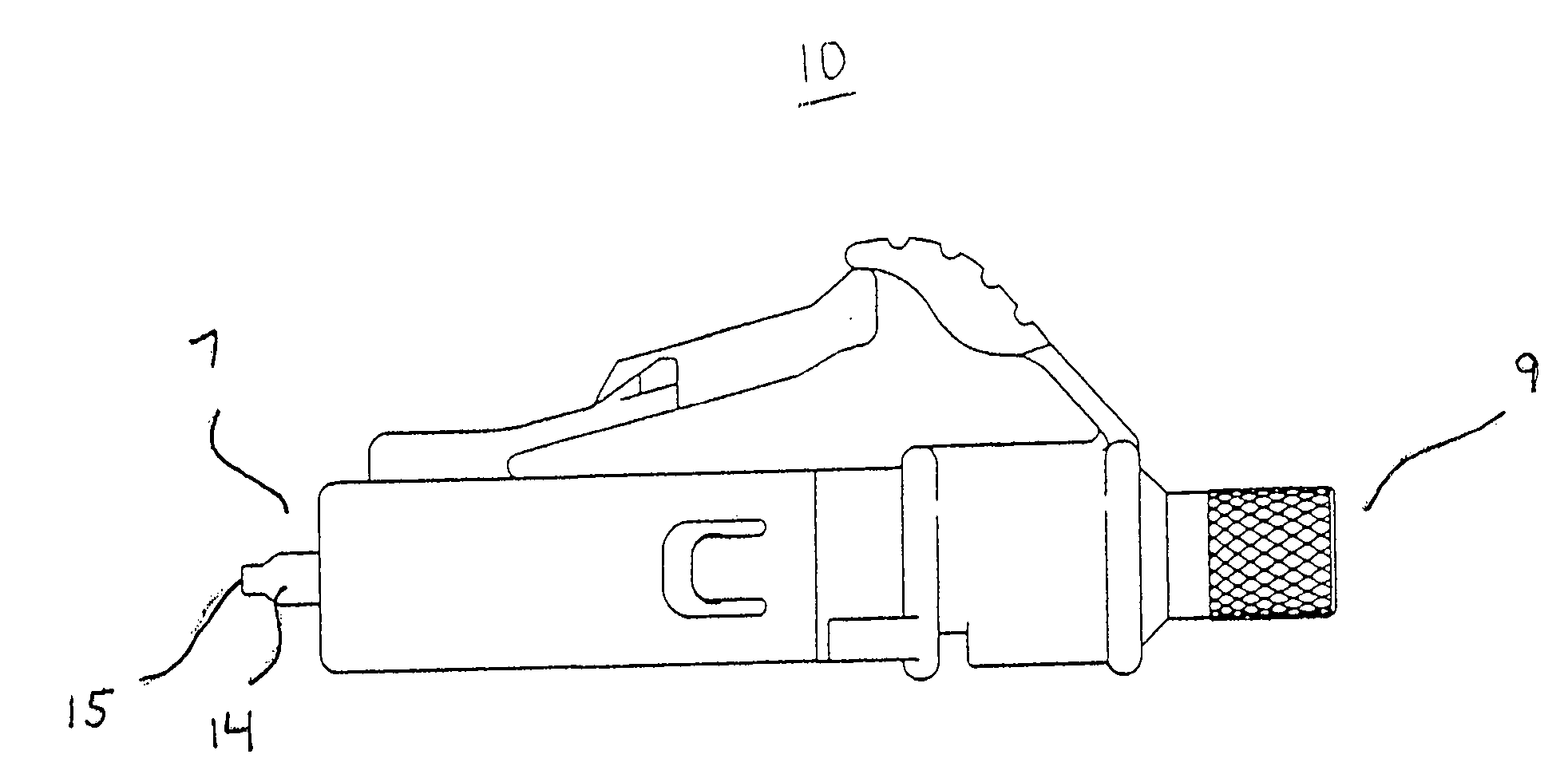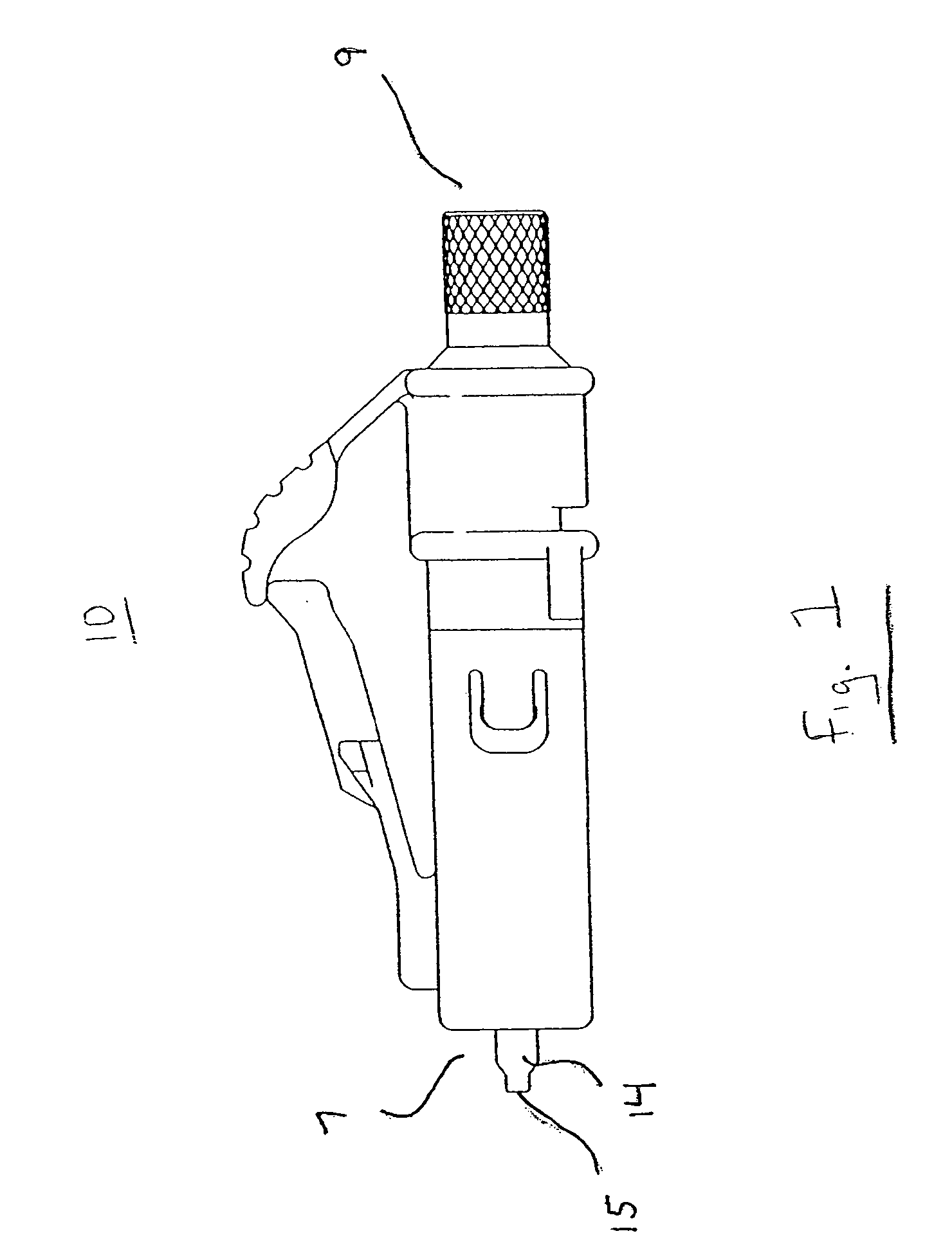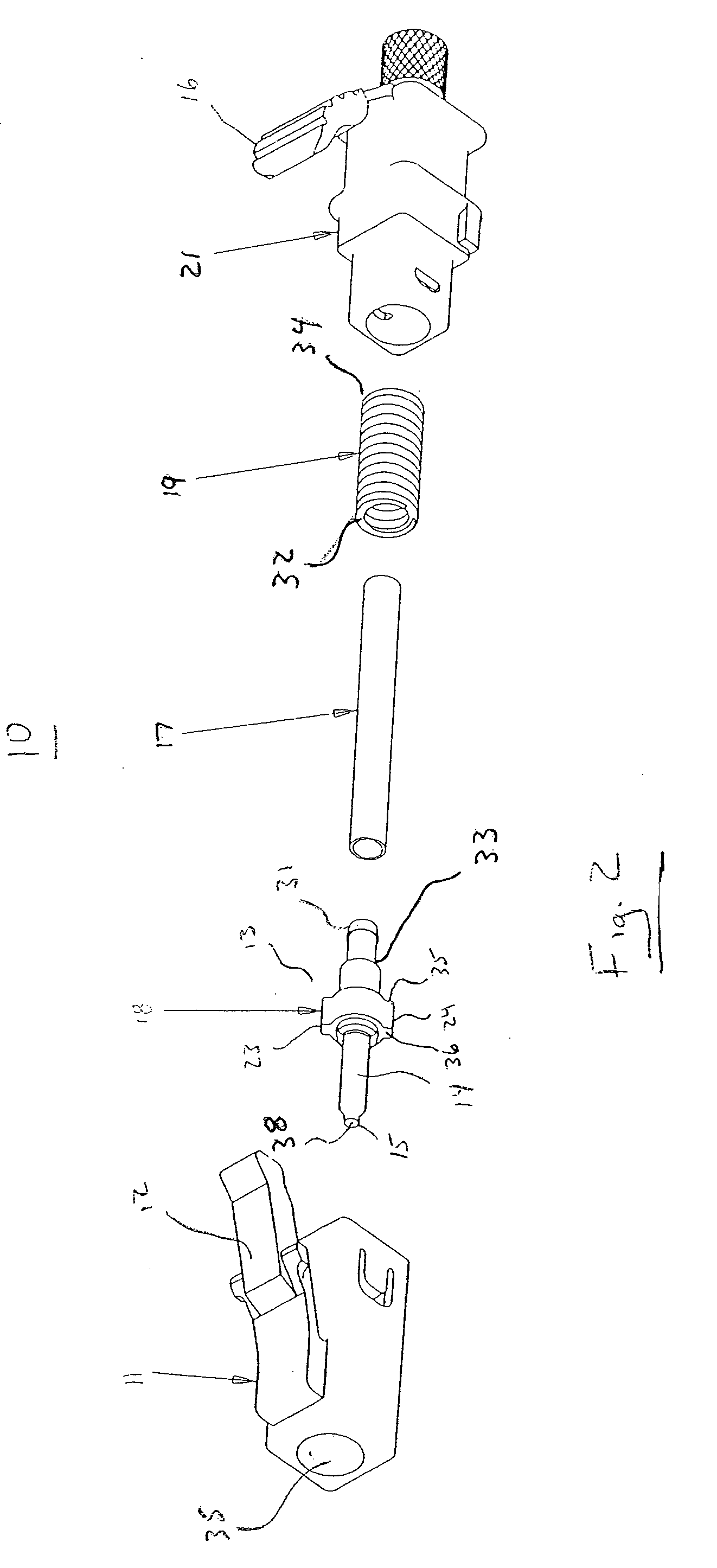Optical fiber connector with ferrule radial orientation control
a technology of optical fiber connector and radial orientation control, which is applied in the direction of optics, instruments, optical light guides, etc., can solve the problems of optical power loss across the fiber connection, the cores of the two mating fibers in the connector unit failing to be perfectly aligned, and the connectors are subject to optical power loss, so as to minimize the loss caused by fiber core eccentricities
- Summary
- Abstract
- Description
- Claims
- Application Information
AI Technical Summary
Benefits of technology
Problems solved by technology
Method used
Image
Examples
Embodiment Construction
[0022] A preferred embodiment of the present invention is shown in FIGS. 1 through 6. The figures show an optical fiber connector assembly. The illustrated connector is an LC type connector, although the invention is not limited to this connector type and may be practiced with other connector types such as the SC-, FC-, and MU- connectors.
[0023] FIG. 1 shows a connector assembly 10 in accordance with the present invention in the assembled configuration. The connector assembly 10 has a front end 7 and a rear end 9. The present invention shall be discussed with reference to a single connector assembly 10; however, in use a pair of connector assemblies 10 would be joined by inserted the front end 7 of a first connector assembly 10 into an adapter where it would couple with the front end 7 of a second connector assembly 10. The front face 15 of a ferrule 14 contained within the first connector assembly would contact the front face 7 of a second connector assembly 10 to provide for conne...
PUM
 Login to View More
Login to View More Abstract
Description
Claims
Application Information
 Login to View More
Login to View More - R&D
- Intellectual Property
- Life Sciences
- Materials
- Tech Scout
- Unparalleled Data Quality
- Higher Quality Content
- 60% Fewer Hallucinations
Browse by: Latest US Patents, China's latest patents, Technical Efficacy Thesaurus, Application Domain, Technology Topic, Popular Technical Reports.
© 2025 PatSnap. All rights reserved.Legal|Privacy policy|Modern Slavery Act Transparency Statement|Sitemap|About US| Contact US: help@patsnap.com



